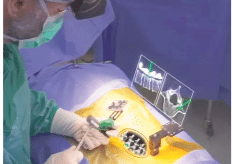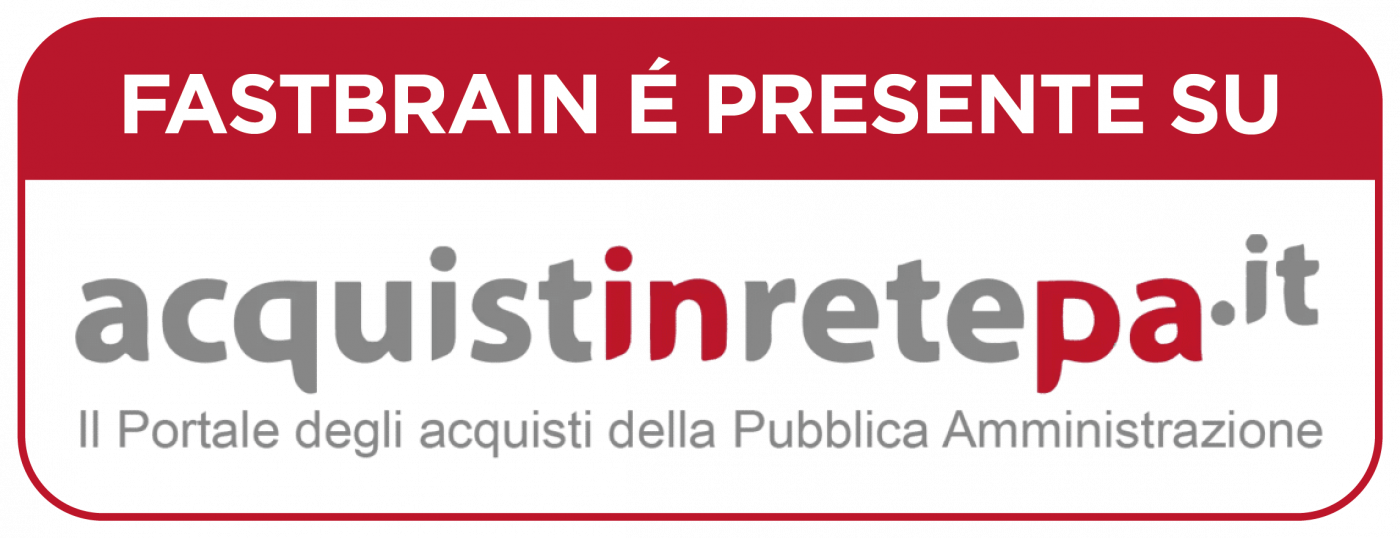Once upon a time, there was the textbook. Pages suffered and consumed by students and teachers and main means of learning.
After the online expansion, in which a digital content part complements the text content part, accessible via QR code, CD Rom, app, the metaverse has arrived, far beyond the web browsing and audiovisual tool.
With the metaverse-a virtual place, composed of “meta” (beyond) and “toward”-which incorporates augmented and assisted reality, we have entered a new technological era.
Today, augmented reality offers all educational settings new opportunities to educate a new generation of students to “be in their own time” without affecting school achievement and learning. Let’s see how.
Sommario
- 1 A more than digital school: hybrid and evolving
- 2 Augmented reality in education
- 3 How does it work?
- 4 Advantages of Assisted Reality in Educational Settings.
- 5 The technologies used in AR
- 6 REQUEST A NO-OBLIGATION DEMO
- 7 Fastbrain for public administration
- 8 Practical Applications of Assisted Reality
- 9 REQUEST A NO-OBLIGATION DEMO
- 10 About Fastbrain and why to choose it
- 11 Contact us for a free consultation
A more than digital school: hybrid and evolving
The digitization of the school sector has necessitated some structural interventions, especially with the implementation of Digital School.
With the development of multimedia media and channels, concentrated especially in the past 10 years, educational activities have also been transformed and are evolving continuously and rapidly.
The goal is to speak an inclusive language that is close to students and the increasingly hybrid reality in which we are immersed, theonlife* coined by web philosopher Luciano Floridi*.
One of the best ways, in terms of effectiveness and involvement, is the use of innovative technologies such as RA* and AR*.
Staying abreast of new technological challenges is an unmissable opportunity for educational institutions, teachers and managers; Those who succeed in this feat will be able to Aligning education and training with the history of recent years, passing on to new generations skills and abilities suitable for dealing with today’s and tomorrow’s increasingly imminent questions.
Augmented reality in education
Augmented reality is among the fastest growing technologies applied to education, and its approach is redefining teaching and learning methods.
How does it work?
The integration of digital elements into the real world, provides an engaging and interactive educational experience that goes far beyond the limitations of traditional textbooks.
Effectiveness in the study
According to the recent scientific paper, The impact of augmented reality on student attitudes, motivation, and learning achievements-a meta-analysis (2016-2023), conducted on 1509 students, showed that most of them, experienced:
- Greater effectiveness in study;
- A more positive attitude toward enhanced teaching tools with Assisted and Augmented Reality;
- Significantly higher learning outcomes than those who did not use AR technologies.

Advantages of Assisted Reality in Educational Settings.
1. Active Student Involvement.
RA is based on active involvement, in which abstract notions are transformed into tangible experiences.
For example, using AR apps for science learning allows students to explore the solar system as if they were inside it, making complex astronomical concepts more accessible and interesting.
This is demonstrated in the study Using simulations to teach young students science concepts: An Experiential Learning theoretical analysis*, where the effectiveness of simulations for young students’ understanding of science concepts is considered.
The research concludes that simulations, possible through tablets and other available technological tools, can be effective in explaining scientific concepts to young students and helpful in developing a solid learning foundation.
An effectiveness consolidated by the guidance of teachers, however, who must work closely with students.
RA uses both special apps and commonplace tablets for science simulations, giving a unique opportunity for understanding the simplest and most difficult concepts.
1. Personalization of Learning
As a Harvard University study found, Augmented Reality allows for personalization of learning, adapting to the different cognitive styles of students.
Through displaying content in an interactive and personalized way, the effectiveness of instruction can be improved.
In particular, the study focuses oncharacter education; it is, in addition, focused on the implementation of moral values, ethics and citizenship education, an area in which more advanced ICT (information and communication technologies) such as AR have offered students several advantages over traditional methodologies.
RA’s immersive learning experience offered students much more than the classic system based on viewing audiovisual material.
Through the Vuforia platform, created to develop augmented and mixed reality*, it was possible to test the AR system in the real world with different applications with the aim of helping teachers strengthen students’ character.
3. Safe experimentation.
RA provides a safe environment to explore complex or dangerous situations.
For example, in medical training, students can practice complex surgical procedures without risk to patients, thus improving their skills and safety in future medical practices.
The aim is to minimize the human factor of error and manage critical situations as best as possible.
A practical example described on medicinamoderna.tv* is the use of a VSI, a mixed technology between augmented and virtual in orthopedic surgery.
Documents and data uploaded to the patient’s PC, such as reports, MRIs, CT scans are displayed in the outpatient clinic during the viewing combining clinical and diagnostic data.
Surgery is planned directly during the visit. Overlaying the CT scan on the patient’s body provides extreme safety to surgical gestures, such as during knee and hip operations.

Another practical demonstration is provided by Sapis, Study Center of the National Federation of Medical Radiology Health Technicians and Technical, Rehabilitation and Preventive Health Professions (FNO TSRMs and PSTRPs), which has initiated a Memorandum of Understanding for the training of new immersive enabling technologies of Extended Reality or Extended Reality (XR).
Key goals include reducing risks and designing research training activities by improving processes and dynamics and delivering better performance by raising the bar for the NHS in terms of quality.
A further conclusion reached by scholars (Azuma, 1997), is that AR, rather than replacing reality merely supplements it with tools and technologies that add value to learning.
If virtual reality isolates from the environment through total immersion, in effect replacing reality with another created ad hoc, AR is based on the combination of virtual and real content.
The tools used are three-dimensionality and real-time interaction with virtual elements.
The technologies used in AR
The main technologies for smooth AR use are pc and portable displays.
Smartphones and tablets are then sufficient; in case computers are chosen, monitors, projectors or small viewers such as smart glasses can be associated.
AR using projectors offers more freedom of movement in confined spaces such as small classrooms; often the best solutions involve the use of smartphones and tablets with small screens that fit in students’ hands.
It is important to choose the right display that enables appropriate instructional design.
In such cases, specific advice can be sought from experts to assess which technologies to choose based on the educational offering or project.

For content management, authoring tools come to the rescue, interfaces that make it possible to create 3D learning experiences that can be used even by the less experienced, for example, teachers who are not very familiar with programming languages.
Through these tools, you can select and upload virtual information useful for lecture and further study in the real environment.
All research converges on the positive outcomes and effectiveness of interactive learning environments.
AR technologies can enhance collaborative learning by facilitating skill acquisition, putting innovative teaching methods at the center.
Regarding learning outcomes, there are numerous researches that record a positive impact (Chen & Tsai, 2012; Gavish et al., 2015; Huang, Chen & Chu, 2016;Ibanez et al., 2014; Kamaraine et al., 2013; Ke & Hsu, 2015; Lin et al., 2013; Liou, Bhagat & Chang, 2016; Sommerauer & Müller, 2014).
According to scholars, the main reasons for the good impact on academic success of these techniques lies in the fact that AR offers:
“better understanding, recall, concentration, interaction and more attractive learning environments than traditional learning environments. “*
In addition, teachers have the opportunity, through these tools, to more quickly and rapidly convey “concepts” to their students who have interacted with AR-supported learning materials before their lessons.”
Other advantages of the teaching approach through augmented reality that have emerged in the studies are:
- Easier for teachers to implement learning experiences more related to real-world contexts;
- Possibility of providing more assistance to the tellers during laboratory teaching;
- More student-centeredness, based on the opinions of teachers, who see AR as an innovative tool that can channel teaching and learning practices to the student.
Fastbrain for public administration
The Public Administrations Electronic Marketplace (MePa) is a digital marketplace where qualified administrations can purchase services and goods offered by suppliers qualified to submit their catalogs on the system.
Fastbrain Engineering S.r.l. is able to offer targeted consulting with a dedicated team for technology investment through the MEPA platform.

We are present on the purchasing portal with a catalog of IT products and a dedicated team, and we act as a technical partner to make choices easier for P.A. purchases by recommending the right item.
Practical Applications of Assisted Reality
1.Science and Mathematics Sector
In science, RA allows students to explore molecules at the atomic level or to observe and manipulate biological structures in detail.
In mathematics, interactive geometry tools can be superimposed on the real world to make abstract concepts more tangible.
To underscore the importance and relevance of these tools, training paths aimed at students and teachers such as the following can be found on the Future School website:
Teaching science with digital education and augmented reality – Exploration of the real world through virtual reality
We discussed this in more detail in this article.
2. History and Culture
History also becomes an attractive and engaging subject thanks to augmented reality.
Through the use of AR, students can relive historical moments or visit faraway places without leaving the classroom.
This method offers deeper immersion in world history and cultures, enhancing understanding and empathy.
An example? A recent call for proposals by the city of Bari activated a project centered precisely on history and augmented and mixed reality, involving 150 students between 8 and 14.
The project was a great success: students, even the youngest, not only easily learned how to use these technologies, but also studied historical events while immersing themselves in a fun and engaging way.
3. Vocational Training
In the context of vocational training, RA offers realistic simulations to prepare students for real situations in their field.
For example, engineers can design and visualize complex structures in a virtual environment, enabling error correction at no real cost.
The study Augmented Reality in Professional Training, highlighted how AR can facilitate a shared learning experience in groups due to the increased visibility of virtual content.
But not only that. Novice physicians can have an authentic AR-enhanced surgical environment in which to improve their neurosurgical skills through practice and in safety.
In addition, AR can provide a variety of visual cues in the digital form of symbols, text, animations or 3D objects, known to facilitate procedural learning in vocational training.
Legend:
*ONLIFE: is a neologism coined by philosopher Luciano Floridi in 2014 formed by the words online and life.
“The current and constant condition of being connected to the Internet (online) even in (life), redefines an increasingly blurred boundary between the analog sphere of reality in presence and the digital sphere of reality mediated by technologies (Floridi, 2017). Not only are we always connected: but always available anywhere, anytime, and anytime.
This means that while we are working on the production of a teaching material we get an email, a WhatsApp message, and an Instagram notification; Siri, Alexa, and Google Home suddenly advise us based on the weather; and Calendar alerts us to a meeting that will start soon.
This transforms our lives on all levels. Think of work time: it does not have a defined boundary today and confined to office walls and hours, we are reachable at all times of the day and week: a public space such as work space, reaches a private space, well we have experienced and lived it in these months of lockdown.
Our children, of all ages, whom we meet in the classroom are not exempt from the concept of onlife; they are immersed in it and live it. Let’s try an example. Consider a primary school child watching a YouTube video “for kids,” at home browsing the parent gallery on the smartphone, and watching his or her favorite shows on Disney Plus.
Definitely an onlife day.” (From Onlife The hybridization of society)*
RA: Augmented Reality
AR: assisted reality
VR: Virtual Reality
References
*Luciano Floridi (2014), The Fourth Revolution. How the infosphere is transforming the world, Raffaello Cortina
https://www.generazioniconnesse.it/_file/documenti/ECD/ECD-2022/pillole/Onlife-internet.docx.pdf
* The impact of augmented reality on student attitudes, motivation, and learning achievements-a meta-analysis (2016-2023) https://www.nature.com/articles/s41599-023-01852-2
https://www.sciencedirect.com/science/article/pii/S036013151930051X#sec8
https://ui.adsabs.harvard.edu/abs/2019JPhCS1375a2035S/abstract
*https://medicinamoderna.tv/dottor-davide-ranaldo-realta-virtuale-ed-aumentata-in-chirurgia-ortopedica-un-altro-passo-verso-futuro.html
sanitainformation.co.uk/health-professions/immersive-technologies-in-the-health-field-signed-a-protocol-agreement-with-the-study-center-sapis
*https://oaj.fupress.net/index.php/formare/article/download/3797/3797/3762
https://encyclopedia.pub/entry/18822
About Fastbrain and why to choose it
Fastbrain Engineering Ltd. Certified Partnerof leading Technology Players, including RealWear®, Brother, Lenovo, Synology, Graetz, SiComputer, Canyonoffers customized purchasing solutions tailored to the needs of professionals. It offers, in addition, pre- and post-sales support,including operational rental.
We are acentralplayer in ICT wholesale distribution and a major player throughout the country in the IT and technology product distribution market.
A key feature and competitive advantage is the selection of top brands and leading products in the most popular product categories.
Info:
info@fastbrain.it
| Tel 011.0376.054


